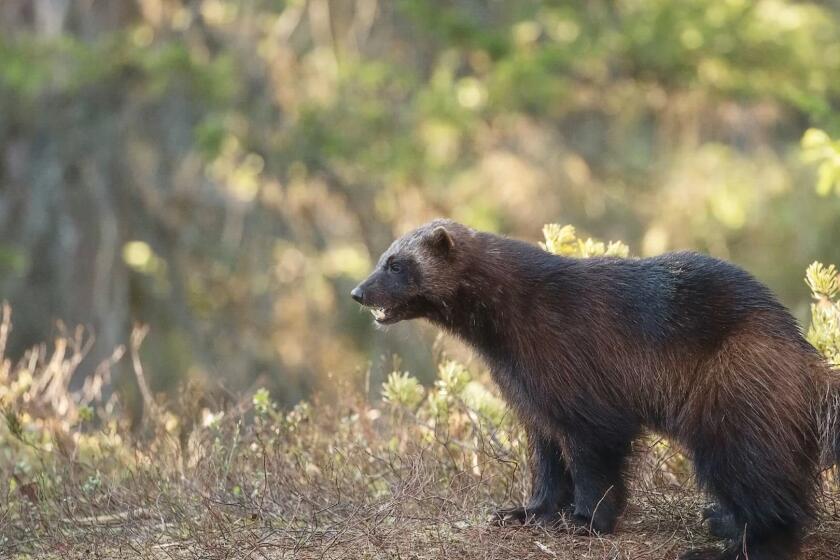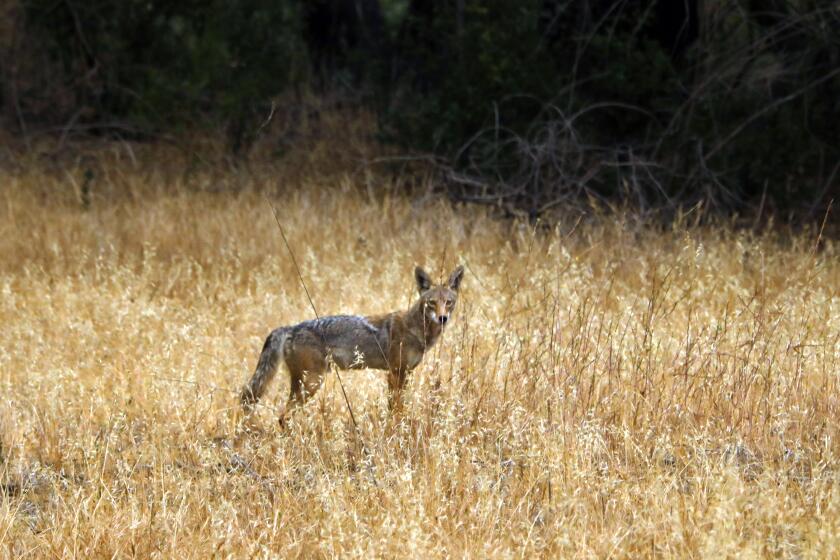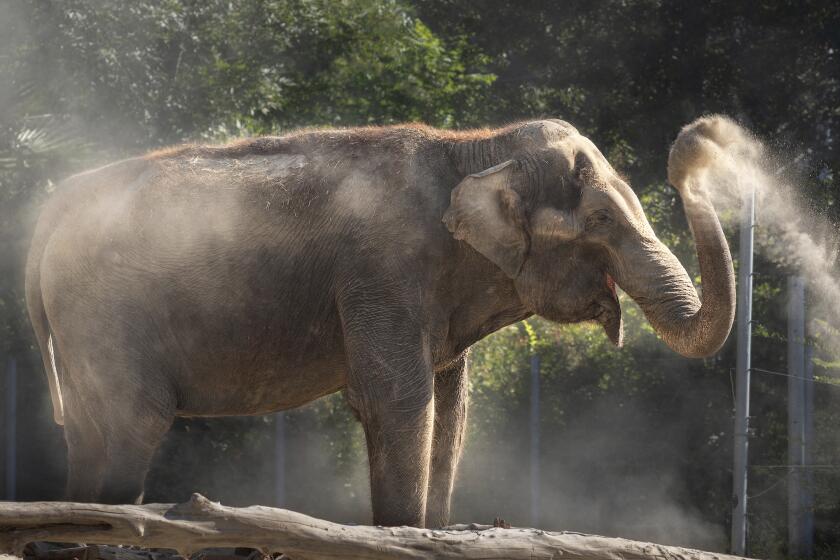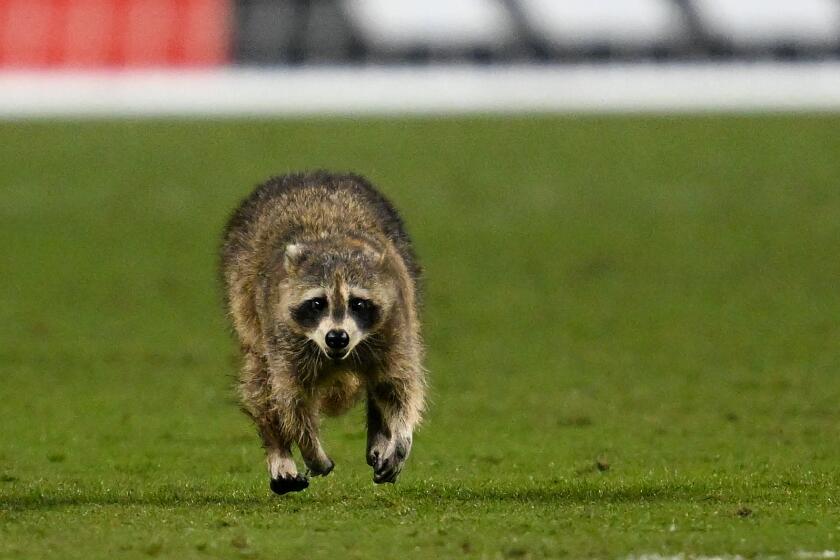Scientists Affirm Gnatcatcher as a Distinct Bird
A national ornithology committee informed federal wildlife officials on Wednesday that Southern California’s gnatcatchers are a distinct subspecies, apparently putting to rest the scientific issue that delayed a decision on the fate of the songbird.
U.S. Fish and Wildlife Service officials, however, warn not to expect their decision soon. They say they probably will not announce whether the gnatcatcher is an endangered species until late November at the earliest.
Last Thursday, the wildlife agency extended by up to six months its Sept. 17 deadline for the decision on the small gray bird. The agency said it needed time to get a definitive statement from the American Ornithologists’ Union on a taxonomy issue raised by Southern California developers.
The building industry, which opposes the listing, questions whether there is sufficient evidence that Southern California’s gnatcatchers are genetically different from gnatcatchers in Mexico.
But Burt Monroe Jr., a University of Louisville biologist who chairs the committee that decides such issues for the ornithology group, told the Fish and Wildlife Service in a Wednesday morning telephone call that the developers’ argument has no scientific validity. He said the committee stands by its 2-year-old decision that gnatcatchers in Southern California are a separate subspecies.
“The committee’s decision is made,” Monroe said. “Nothing has changed as far as we’re concerned.”
Environmentalists charge that the wildlife agency’s postponement of the gnatcatcher decision was motivated by politics rather than concern about taxonomy. They contend that the White House pressured the agency to postpone its decision until after the Nov. 3 election.
U.S. Interior Secretary Manuel Lujan Jr.’s spokesman has strongly denied that politics played any part in the delay. Developers, mainly in Orange and San Diego counties, requested the extension and have mounted an intense effort for two years to oppose the listing because it could delay or halt development.
The Endangered Species Act allows an extension to be granted on a listing decision only when there is “substantial disagreement regarding the sufficiency or accuracy” of the scientific data about a species.
Monroe said he would have informed federal officials of the ornithology group’s opinion before the Sept. 17 deadline, had he known they were awaiting word from his committee.
Jeff Opdycke, the wildlife agency’s supervisor in Carlsbad, wrote to Monroe on Aug. 19 asking the committee to report its conclusions. But Monroe said Wednesday that he either didn’t receive the letter or misplaced it. He said he will back up his verbal comments with a written statement today or Friday.
Monroe said the wildlife agency “seems to be procrastinating . . . but they get so much pressure. They want to be darn sure, whatever they do.”
An official in the Fish and Wildlife Service’s regional office in Portland, Ore., said it will probably be at least two months before a listing decision is made because the agency just opened a 30-day comment period regarding the extension. Closing the period prematurely could make them vulnerable to a lawsuit, he said.
“It is incredibly unlikely that we would close the comment period before that, which is Oct. 22,” said Phil Carroll, chief of education and information at the regional office.
After Oct. 22, the service’s field office in Carlsbad--which has consistently advised listing the bird--will make a recommendation. It then must be reviewed by federal officials in Portland and in Washington, including Lujan, Carroll said.
“That combination usually takes anywhere from one to four months. Who knows how long this one will take? It could be quick or it could be tortuous,” Carroll said.
Laer Pearce, who represents a coalition of Orange and San Diego County developers involved in the gnatcatcher issue, said Wednesday that they haven’t given up.
“The decision (by the ornithology group) is disappointing, but I wouldn’t think they would be terribly sympathetic to our reading of the issue. I hope they gave us a fair reading,” he said. “I don’t think it is over yet, anyway. I don’t see why all the other issues we raised should not be considered too, such as the habitat size and the population.”
Monroe said Thursday that there has never been scientific debate among the ornithologists’ group about the taxonomy of the Southern California gnatcatchers. In its 1957 North American bird checklist, the population was considered a distinct subspecies from the Baja California ones, he said.
Jonathan Atwood, a Massachusetts ornithologist who petitioned the federal government to list the bird, reaffirmed that conclusion in 1990 in a published study. He noted 31 differences between the California birds and the central Baja ones, from the color of their breast feathers to the size of their bills.
C. Val Grant, a biological consultant in Utah hired by the Chevron Land Co., triggered the debate by questioning Atwood’s conclusions. He said Atwood’s findings are not supported by his data, and that the differences in the birds may be caused by superficial factors such as climate and diet, not genetic traits.
Monroe said the ornithology committee reviewed Atwood’s data and gnatcatcher specimens two years ago and accepted the birds as separate subspecies. He added that the Chevron report does not change their minds.
The Chevron report “just questions the statistics that Atwood was using. But that statistical data was not a major part of the decision making,” Monroe said. “We still accept the California subspecies of the California gnatcatcher. . . . We’ve seen the specimens, and you can’t change that. They are distinct.”
More to Read
Start your day right
Sign up for Essential California for news, features and recommendations from the L.A. Times and beyond in your inbox six days a week.
You may occasionally receive promotional content from the Los Angeles Times.






